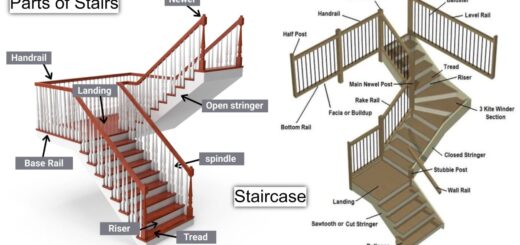18 Types of Dams – Components, Advantages & Disadvantages [Explained with Details]
![18 Types of Dams - Components, Advantages & Disadvantages [Explained with Details]](https://engineeringlearn.com/wp-content/uploads/2022/12/Dams-1024x539.jpg)
What is the Dam?
18 Types of Dams – Components, Advantages & Disadvantages [Explained with Details]: – A dam is a pressure-driven or hydraulic structure built across a waterway or a stream to create a reservoir for the accessible water. A dam is likewise alluded to as a barrier that is built across a river or a stream to restrict and control the progression of water. Dams may be built as small as an embankment dam, built to provide an adequate amount of water on farms, or as extensive as a massive concrete structure for different purposes.
The reservoir created by dams provides water for different purposes like human consumption or utilization, horticulture exercises, industrial use, hydro-power generation, and so on.
Components of Dams (Structure)
There are various types of dams, yet different dam components remain the same for each situation. Dam by and large has an upstream slope and a downstream slope, and both have various segments. Subsequently, a few parts of a dam are given underneath:
1. Crest
The top of the Dam. These may at times be utilized for giving a street or walkway over the dam.
2. Toe
Like the heel, the toe is a structural design that keeps in contact with the waterway bed on a downstream slope.
3. Parapet Walls
Parapet walls are the less safeguarding walls on each side of the street or walkway of the crest.
4. Heel
The heel is the part that contacts the ground on the upstream side of a dam.
5. Gallery
The gallery is a little room-like space that is transverse or longitudinal in shape inside the dam. The gallery is required for drilling grout openings and drainage holes and for monitoring the dam’s operation.
6. Abutments
On one or the other side of the dam wall, which serves as an abutment for the left and right ends of the dam, the valley slants or slopes.
7. Spillway
For the surplus water movement from the pool, a kind of passage was made known as a spillway. The spillway is of two kinds; one is controlled where gates control the water flow, and another is uncontrolled, where the main control is the elevation of the spillway crest.
8. Sluice Way
Opening the dam close to the base provided to clear the sediment accumulation in the reservoir.
9. Freeboard
The freeboard is the gap between the highest level of water in the reservoir and the structure’s cap.
10. Dead Storage Level
It’s the long-lasting stockpiling level underneath which water will not be taken out.
11. Diversion Tunnel
A diversion channel is a channel made to redirect the way of water flow to bypass it to the construction site. In this way, the river flows through it during the construction and development of hydraulic structures.
Types of Dams
Dams are classified into different sorts in view of multiple factors like water hydraulic design, functions, the material of construction, structure, or even materials. In this way, let us discuss the various types of dams as per different aspects.
A) Types Based on Hydraulic Design
In light of the hydraulic design, there are two kinds of dams;
1. Overflow Dam: ( Types of Dams )
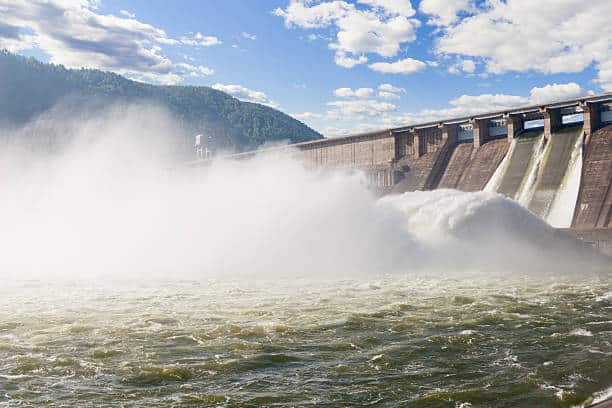
Overflow dams are made for the passage of the overabundance of water that can’t store in the reservoir. Such dams permit the flood of water over the whole length of the dam crest. Besides, overflow dams are the concrete type of dams.
2. Non-overflow Dam: ( Types of Dams )
Now and again, there is no spillway made for the entry of surplus or overflow water. In this way, these are known to be non-overflow dams.
B) Types Based on Various Functions
As indicated by the different functions and capabilities, five sorts of dams are found;
1. Storage Dam or Impounding Dam: ( Types of Dams )
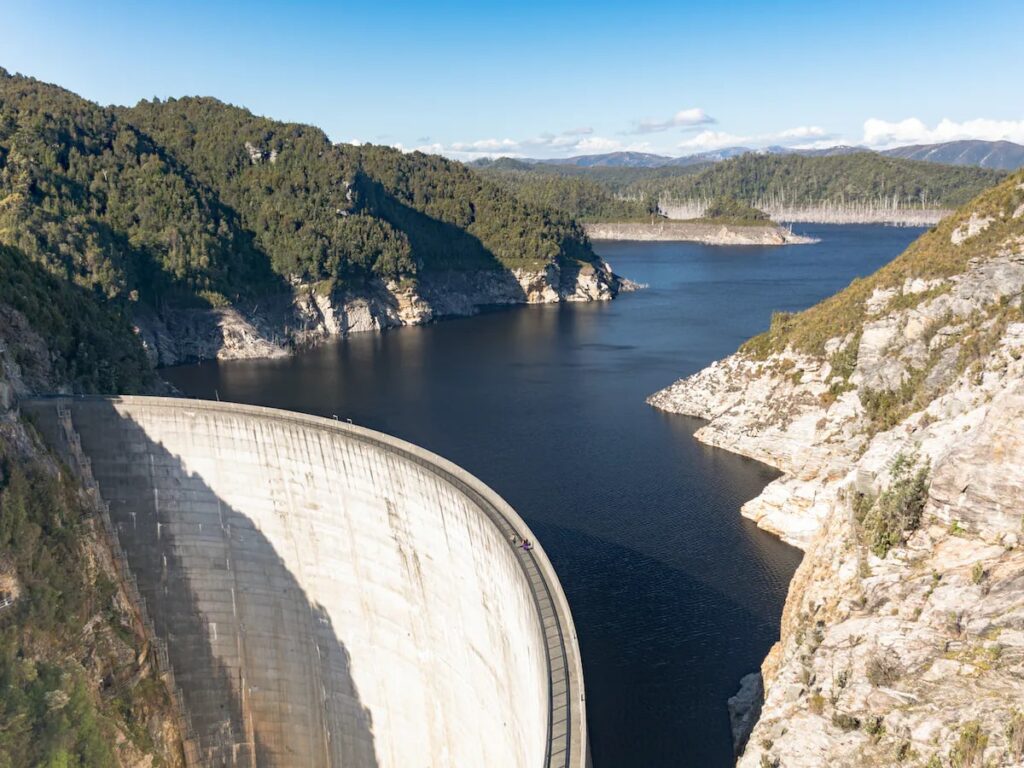
The storage or impounding dams are the most well-known types used to retain water, particularly in the rainy season, when the majority of the rainwater surpasses and squanders. That stored water can be utilized in the summer when water is scarce. We can likewise utilize such a reservoir for the fishery or some other comparative purpose. Further, we can utilize that stored water for horticulture, hydro-power generation, or water supply to various areas.
2. Diversion Dam: ( Types of Dams )
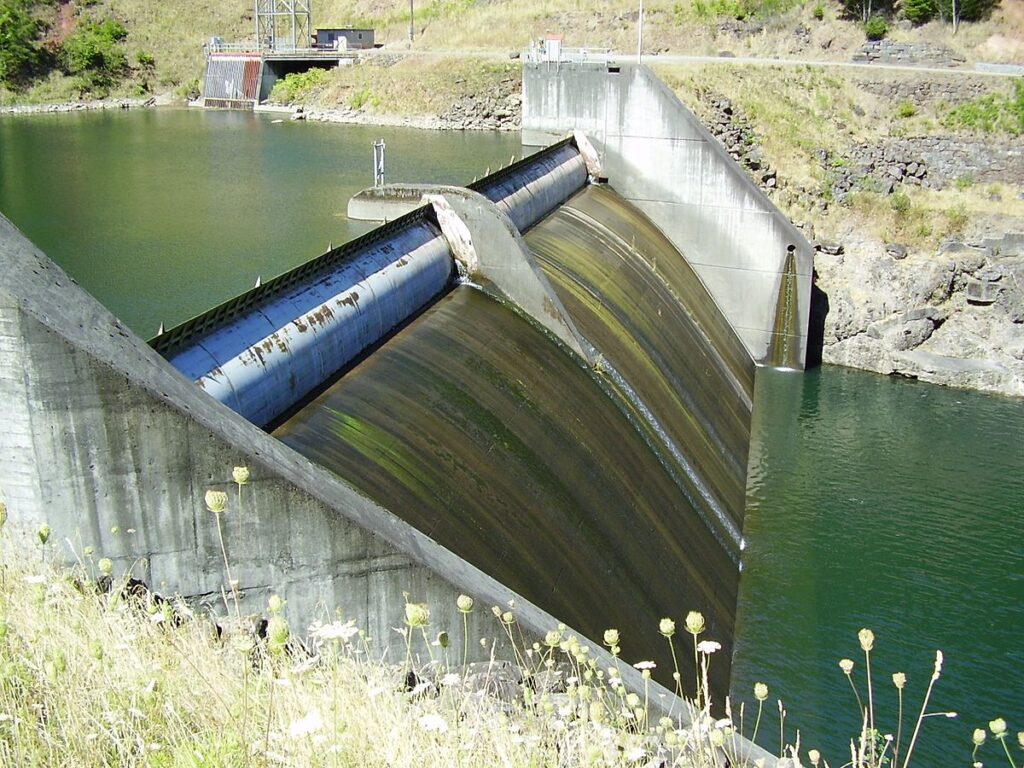
A diversion dam is constructed to divert the water from the river into an off-taking trench (or a channel). They provide adequate pressure for pushing water into ditches, channels, or other conveyance systems. Such shorter dams are utilized for irrigation, and diversion from a stream to a distant storage reservoir. A diversion dam is usually of low height and has a small storage supply on its upstream. The diversion dam is a kind of storage weir that likewise diverts water and has a small storage.
3. Coffer Dam: ( Types of Dams )
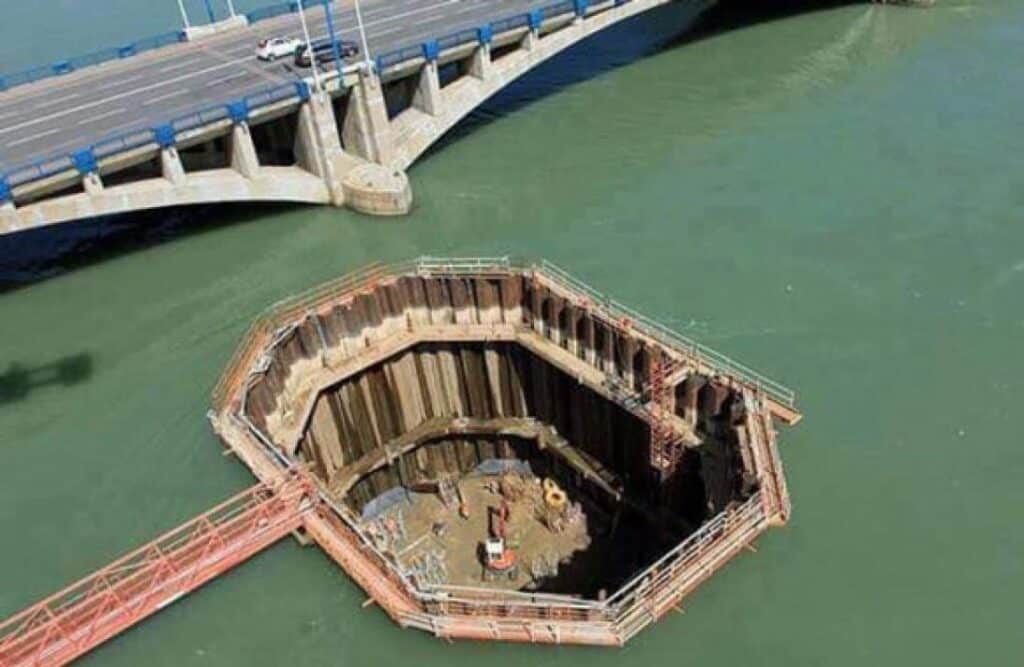
It is an enclosure constructed around the construction site to exclude water so that the construction and development can be done dry. A cofferdam is in this way a temporary dam constructed for facilitating construction. A coffer dam is typically constructed on the upstream of the principal dam to divert water into the diversion tunnel (or channel) during the construction of the dam. At the point when the flow in the river during construction of the dam isn’t a lot, the site is generally enclosed by the coffer dam and pumped dry.
4. Detention Dam: ( Types of Dams )
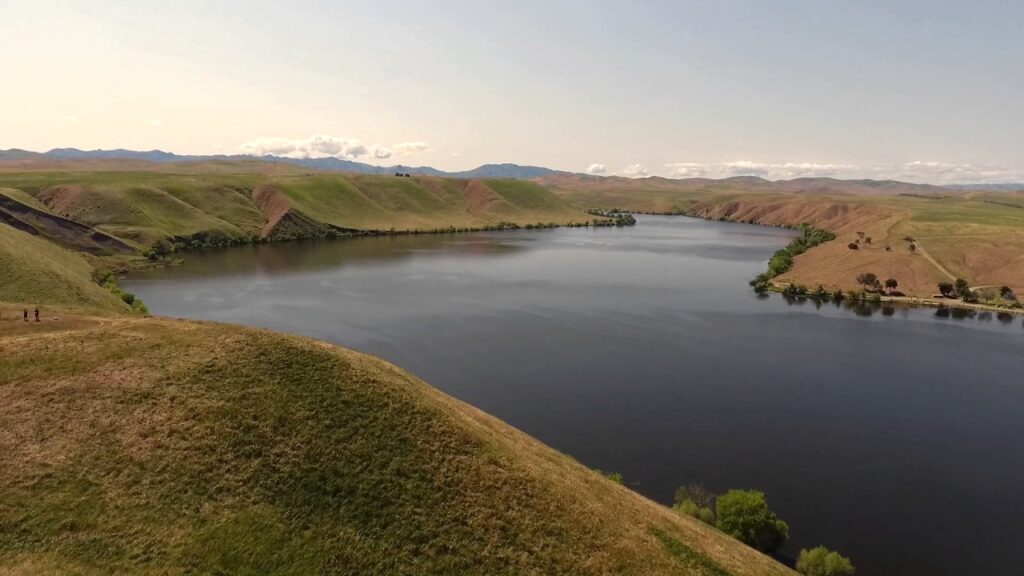
These are also called flood control dams as their function is to forestall a flood. Detention dams are constructed for flood control. A detention dam hinders the flow of the river on its downstream during floods by storing some flood water. Subsequently, the effect of unexpected floods is decreased to some extent. The water retained in the reservoir is subsequently released steadily at a controlled rate as per the carrying capacity of the channel downstream of the detention dam.
5. Debris Dam: ( Types of Dams )
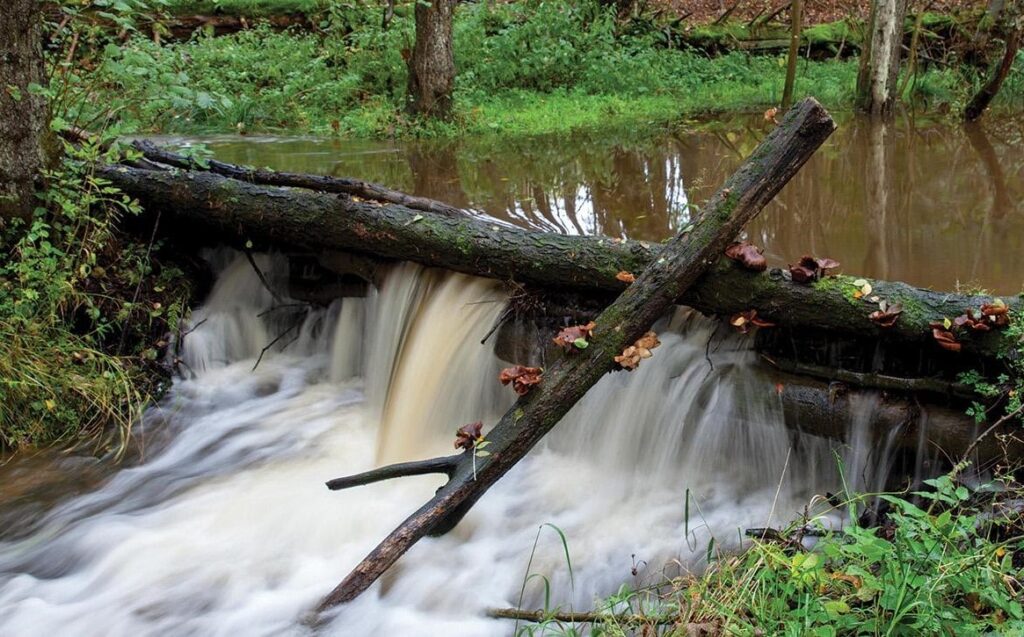
A debris dam is made for the retention of debris like sand, driftwood, and debris in the flowing stream water. Thus, the pure water is let out of the other side, supplied, and utilized as drinking water to different regions through canals and pipelines.
C) Types Based on the Material of Construction
Assuming that we classify the dams as indicated by the construction and development material, we get two sorts. That is,
1. Rigid Dam: ( Types of Dams )
In the event that the dams are constructed with rigid materials like stone, timber, steel, brickwork, or cement, they are called rigid dams.
2. Non-rigid Dam: ( Types of Dams )
Unlike the above one, the non-rigid dam is formed of non-rigid materials like tailing, rockfill, and so on.
D) Types Based on Structure
Once more, in light of the structural design, there are the accompanying sorts of dams;
1. Arch Dams: ( Types of Dams )
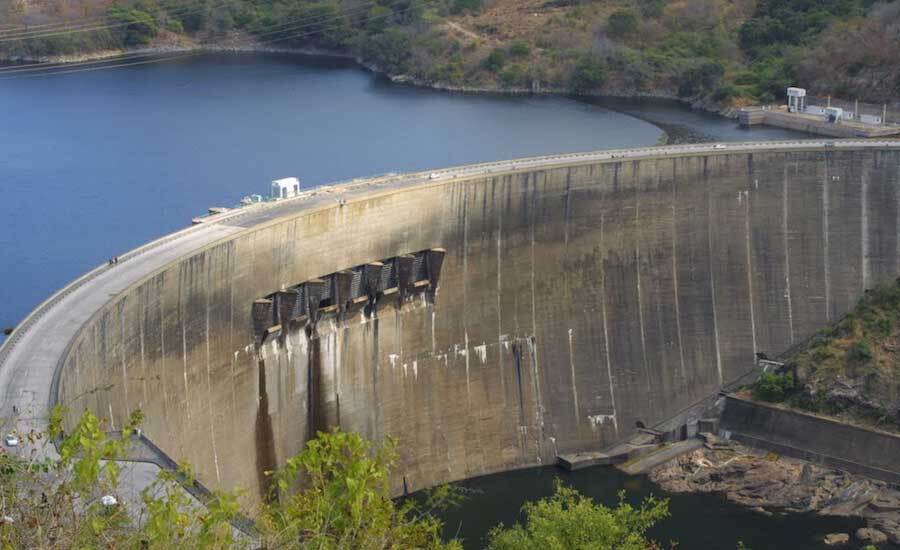
An Arch dam is curved in design, with its convexity towards the upstream side. An arch dam moves the water pressure and different forces fundamentally to the abutments by arch action. An arch dam is quite appropriate for narrow canyons which are fit for resisting the thrust created by the arch action.
The segment of an arch dam is approximately three-sided like a gravity dam yet the section is nearly more slender. The arch dam might have a solitary curvature or twofold curvature in the vertical plane.
2. Earth Dams: ( Types of Dams )
An earth dam is made of earth (or soil) developed by compacting progressive layers of earth, utilizing the most impervious materials to frame a core, and putting more permeable substances on the upstream and downstream sides. A facing of crushed stone forestalls disintegration by wind or rain, and an adequate spillway, usually of concrete, safeguards against catastrophic washout should the water up and over the dam.
Earth dams can resist the forces applied upon it mostly because of the shear strength of the soil. Albeit the weight of the earth dam likewise assists in resisting the forces, the underlying way of behaving of earth with damming is completely different in relation to that of a gravity dam. The earth dams are typically built in wide valleys having flat slopes on flanks.
3. Buttress Dams: ( Types of Dams )
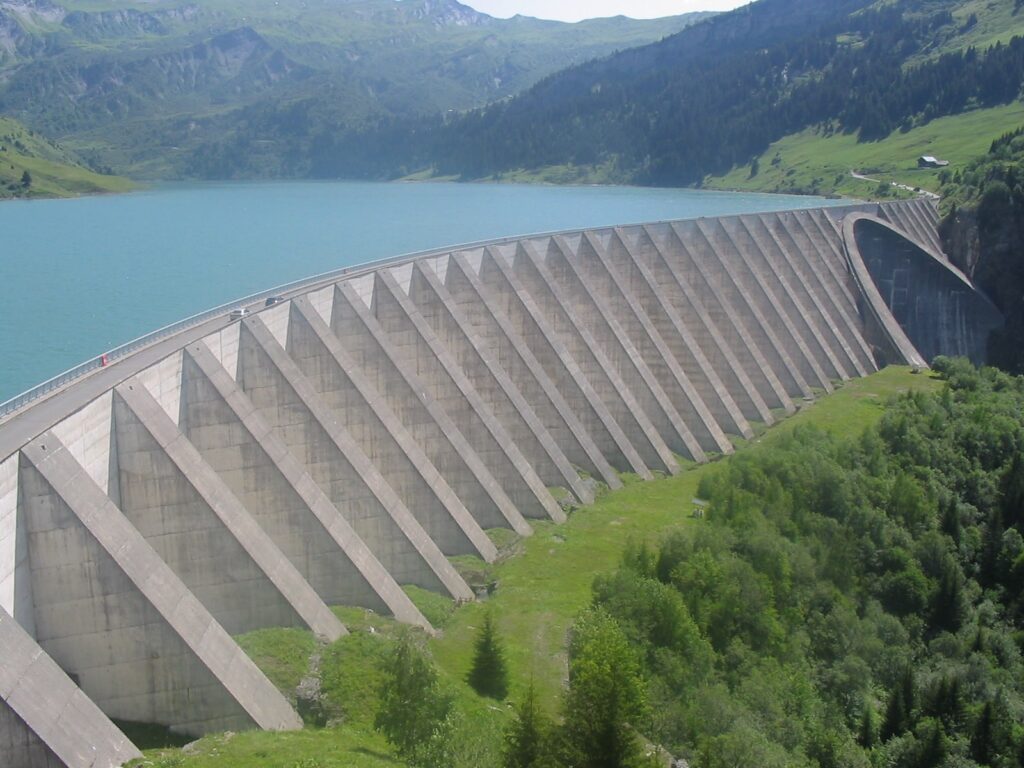
It is supported by a progression of buttresses (three-sided concrete walls) and comprises sloping membranes (safeguarded concrete slabs) and decks for water retention. It is quite similar if compared with gravity dams in structure and can be characterized under a gravity dam. Such dams are of three kinds; multiple-arc type, deck type, and massive head type. Notwithstanding, these are in some cases called hollow dams as they don’t form a stable wall.
4. Barrages: ( Types of Dams )
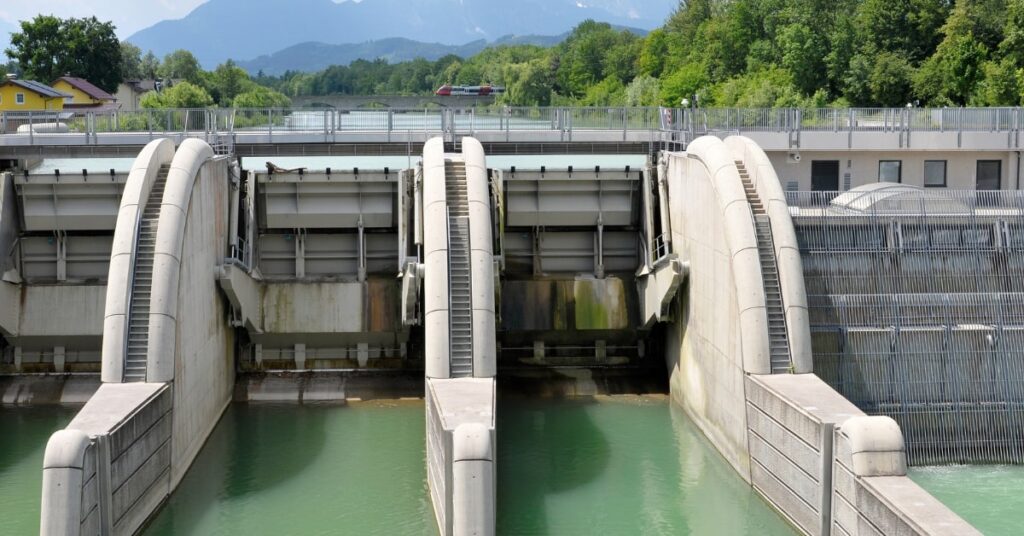
The specific kind of dam formed with many gates for controlled entry of water is known as barrages. These are likewise utilized at the lagoon to extract tidal or flowing energy, and such a sort is known as a tidal barrage.
5. Gravity Dams: ( Types of Dams )
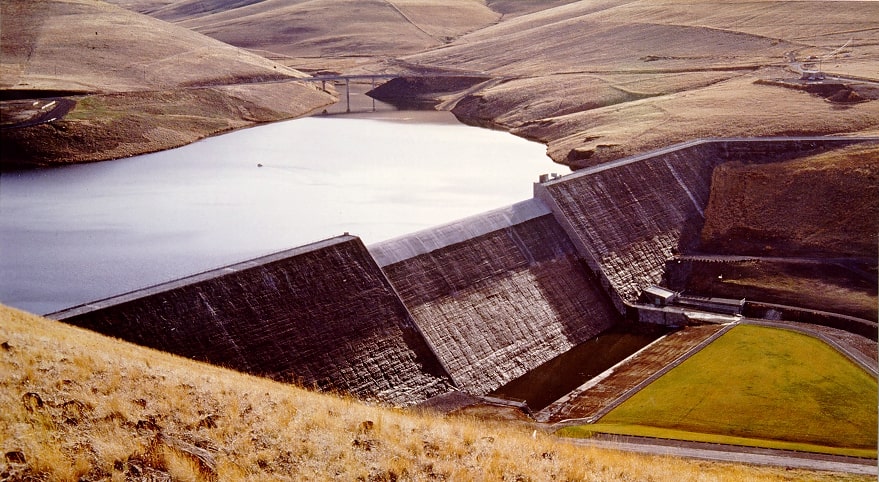
Gravity dams are three-sided shaped and comprised of masonry. A gravity dam is a massive-sized dam fabricated from concrete or stone masonry. By utilizing concrete, the weight of the dam is actually able to resist the horizontal thrust of water pushing against it. To this end, it is known as a gravity dam. Gravity essentially holds the dam to the ground, preventing water from toppling it over.
Gravity dams are appropriate for blocking rivers in wide valleys or narrow gorges ways. Since gravity dams should rely on their own weight to hold water, it is important that they are built on a strong foundation of bedrock.
6. Embankment Dams: ( Types of Dams )
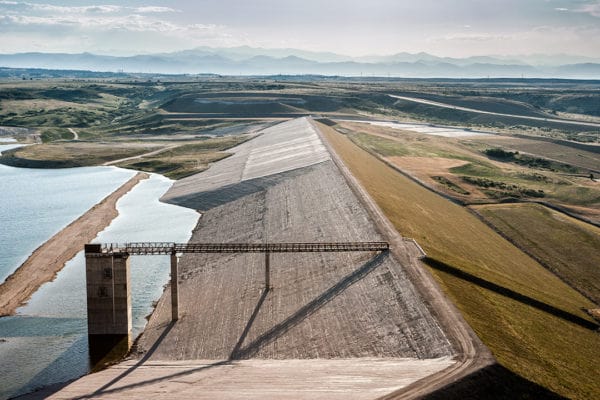
These dams are trapezoidal in structure and form of the earth (mud, sand, and rock), generally more modest in size, and more extensive at the base utilized for support in a region where concrete dams are weakened. Moreover, this is a non-rigid dam.
7. Rockfill Dams: ( Types of Dams )
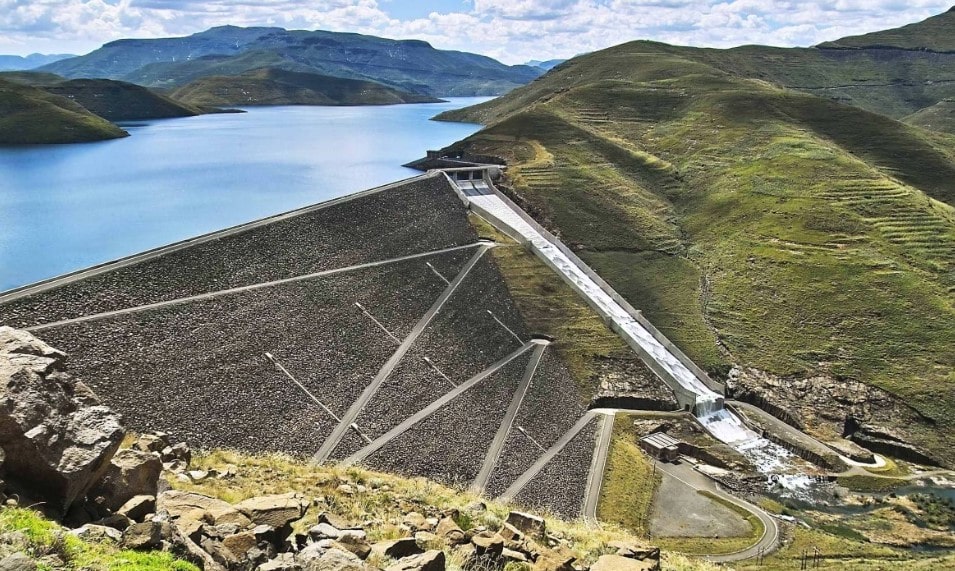
A rock-fill dam is built of rock fragments and stones of large size. An impenetrable membrane is placed on the rock-fill on the upstream side to decrease the seepage through the dam. The membrane is normally made of concrete or asphaltic cement. In early rock-fill dams, steel and timber membrane were likewise utilized, however presently they are obsolete. A dry rubble cushion is set between the rock-fill and the membrane for the dissemination of water load and for providing support to the membrane.
In some cases, the rock-fill dams have an impervious earth core in the middle to actually look at the seepage rather than an impervious upstream membrane. The earth core is set against a dumped rock-fill. It is important to provide adequate filters between the earth core and the rock-fill on the upstream and downstream sides of the core so that the soil particles are not conveyed by water and funneling doesn’t happen.
E) Types Based on Material
Lastly, in light of the varieties of materials, two types of dams are listed below:-
1. Timber Dams: ( Types of Dams )
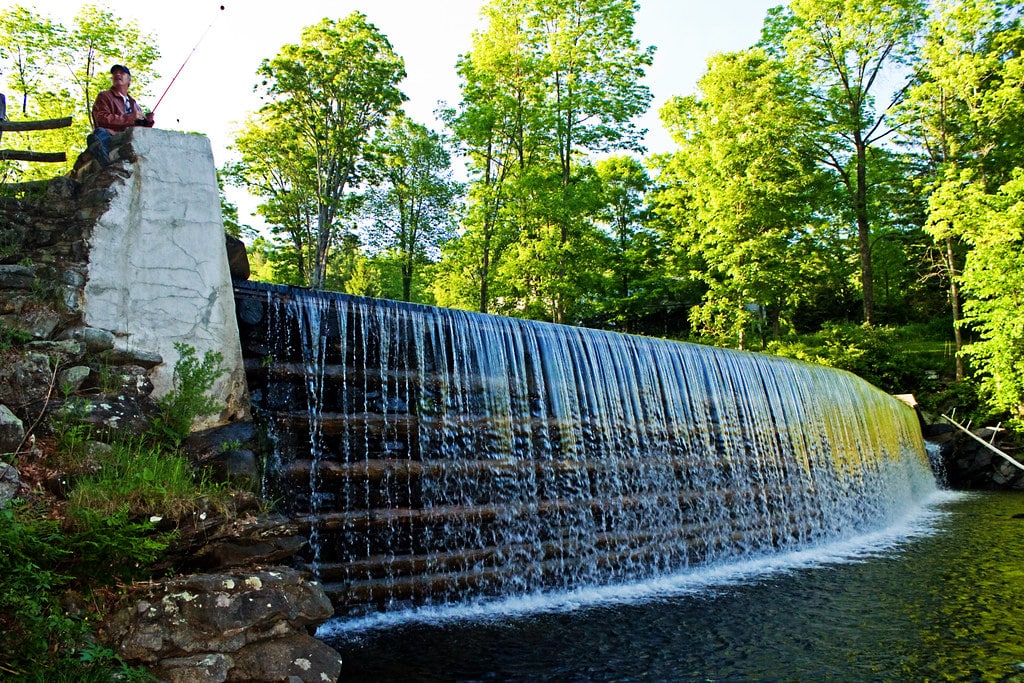
Main-load-conveying structural elements or components of timber dam are made of wood, on a very basic level coniferous varieties like pine and fir. Timber dams are made for small heads (2-4 m or, sometimes, 4-8 m) and by and large, have sluices or conduits; according to the design of the apron they are divided into a pile, crib, heap lodging, and buttressed dams.
The openings of timber dams are restricted by abutments; where the sluice is very extended it is divided into a couple of openings by intermediate support: piers, buttresses, and posts. The openings are covered by wooden shields, ordinarily a couple of in progression one over the other. Simple hoists durable or flexible winches are used to raise and lower the shields.
2. Steel Dams: ( Types of Dams )
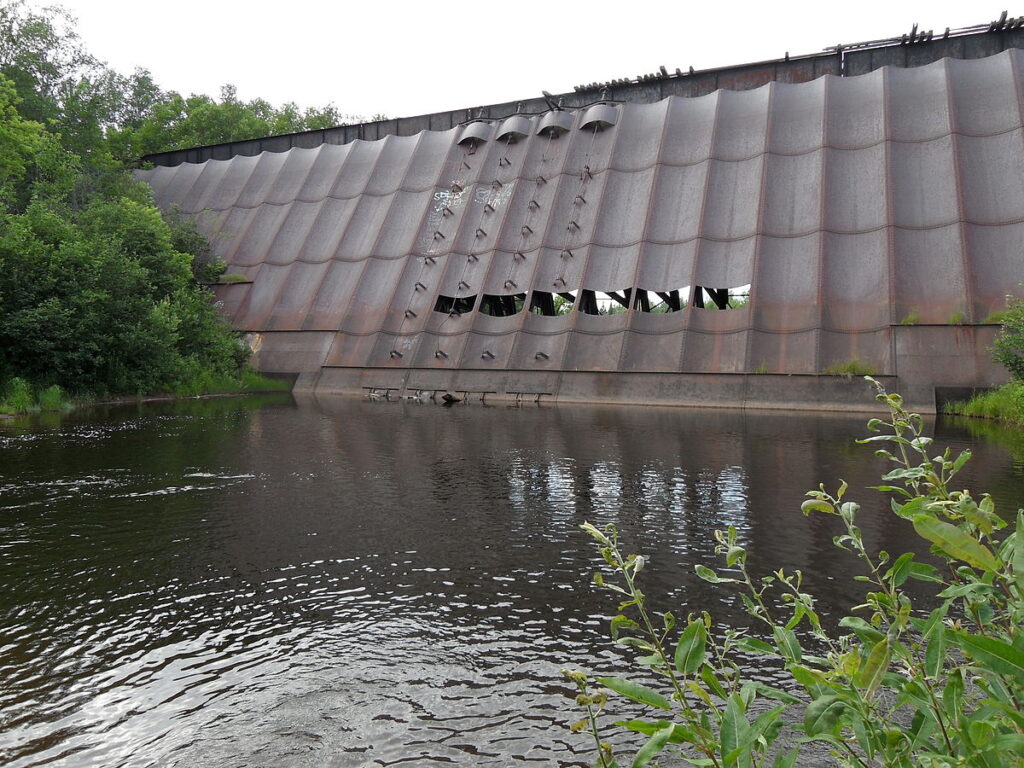
Steel dams are for the most part named so as the upper stream of such dams is comprised of steel plates. This is of two sorts, for example, Direct strutted and cantilever. Cantilever-type steel dams. In a direct strutted steel dam, the water pressure is transmitted straightforwardly to the foundation through inclined or slanted struts. In a cantilever-type steel dam, there is a twisted supporting the upper part of the deck, which is framed into a cantilever truss.
This arrangement presents a tensile force in the deck girder which can be dealt with by anchoring it into the foundation at the upstream toe. Notwithstanding, it would require heavier segments for struts. One more choice to reduce tension is to approach together the whole bent rigidly so that the moment because of the weight of the water on the lower part of the deck is used to offset the moment induced in the cantilever.
This arrangement would be that as it may, require bracing and this will increase the expense. These are very expensive and are exposed to corrosion. Steel dams are in some cases utilized as temporary coffer dams during the construction and development of permanent dams. Steel coffer dams are enhanced with timber or earth fill on the inward side to make them watertight.
Advantages of Dams
We use dams to obstruct or stop the movement of water along a stream. Yet this design construction gets normally associated with the creation of hydroelectric energy, we moreover use them for different purposes. Right when a waterway gets dammed, it creates a fake lake behind it that can be used for drinking water, supporting purposes, and water systems. In any case, there isn’t adequate clean water for drinking or water system purposes in many parts of the country. On various hands, streak floods are in like manner relentless in numerous districts.
1. Generation of Power
When water goes through a dam it generates Hydroelectric power. The power is made by a device called a turbine. These are made of metal twists encompassed by magnets. The magnets turn over the twists to convey power. Turbines are found in dams. The water going through a dam turns the magnets. The energy made is great and contamination free. From this power, you can turn the lights on in our homes.
2. Water to Drink
Since the water set aside in dams is new water, it can then be used for savoring water in nearby towns and metropolitan regions. A couple of urban communities get their water from streams and waterways in various states. The water is sent through colossal channels and streams.
3. Irrigation Facility
Dams and streams store and give water to the water system so farmers can involve or use the water for developing harvests. Once more this thought goes way into history. The water system is a critical part of using water. In many regions where water and downpour are not copious (like the desert), water system waterways from streams and dams are used to convey water.
4. Reservoirs
Dams give an incredible entryway to diversion. In building a dam water is taken care of from behind. This water is known as a repository. Repositories are used to store water, especially during seasons of overabundance.
5. Flood Control
During flood season, the movement of water downstream can be constrained by a dam. The abatement in the flood will save the harvests and property from being washed away. It in like manner lessens blockage of spillover in fields and oceanfront landscapes. Avoiding flood dangers can ensure the supported economy of the whole country.
6. Means of Transportation
Streams and waterways give an incredible entryway to transportation. Barges and ships can investigate along a waterway conveying colossal heaps of food and product. This style of transportation is feasible in light of the fact that the heaps conveyed can be exceptionally huge.
Disadvantages of Dams
1. Submergence Problem
A colossal region gets brought down due to the rising in the water levels and transformed into a supply. The proprietors of those territories should be moved, enough redressed and particularly settled somewhere else. This requires an extra spending plan for arranging a dam development.
2. Wastage of Water
Now and then water is used in an abundance of evapotranspiration necessities. This water appears in the system or framework as surface or groundwater. Nevertheless, it degrades in quality, generally due to composts and pesticides, other than minerals drawn from soils. Such waste should be restricted.
3. Dam Failure
Dam failures may happen because of many reasons. Dismissing potential powers or unanticipated powers is the essential justification behind the failures. The defective arrangement or event of unexpected floods can similarly be the reason for failures. Not staying aware of fitting standards during planning and development is similarly a justification behind dam failures. Dams may at times flounder due to unreasonable and unexpected tremors.
4. Environment Impact
Everyday routine patterns of environments experienced in the water get affected in view of the development of dams. Their life cycles are acclimated to normal stream natural environmental elements and stream systems.
Conclusion
Dams have turned into a superior innovation found in old times. Around then, we didn’t need a lot of energy, and we used dams as a reservoir for irrigation purposes. Water is the most significant part of life on earth as air and soil. What’s more, with the increased population, the use of water likewise increased. These days, we should require electricity to operate a wide range of electronic contraptions, which makes our lives more easier.
Thus, dams are made in most rivers where hydroelectric power generation is a significant function. Moreover, a large population needs a large amount of food too, for that likewise dams are made and utilized mostly. After all, good and bad are perfect representations of one another. In this way, we ought to never be dependent on anything on the excessive amounts to be the essential justification for our destruction.
Content Source: – earthreminder, civileblog, aplustopper
Image Source: – istockphoto, theconversation, wikipedia, thehansindia, hrwallingford, enr, graconllc, rjh-consultants, pinterest, flickr, wikidata
